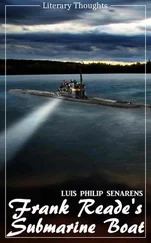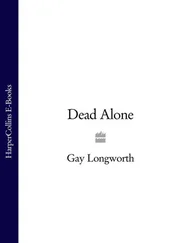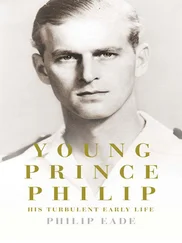In the satellite countries of Eastern Europe improving living standards became more effective than secret-police activity and repression in maintaining stability through the 1960s and ‘70s. In Hungary the Kadar regime produced an apparent miracle in the early 1960s, transforming a population seething with resentment after the suppression of the 1956 rising with the offer of a social truce under the slogan ‘Whoever is not against us is with us.’ Collectivization was reintroduced, but more sensitively than on the first occasion, and in a practical rather than doctrinaire fashion. In time, many of the collectives became profitable, set up shops and restaurants in nearby cities, and began to resemble Western-type companies. Traditional industries like food-processing came into their own along with high-technology industries like the manufacture of optical instruments, which were favoured for investment. The ‘black economy’ was partly legalized, workers were encouraged to use factory equipment to make products outside working hours to sell for their personal profit, and moonlighting became common. The economy grew; so did people’s incomes. Television sets and washing machines, which had once been very scarce, became almost commonplace. In East Germany, where a Communist substitute for Hitler’s Volkswagen came into mass production, people were encouraged by the prospect of owning a Trabant car, or a boat to sail on the Baltic, or a cottage by the sea or in the country, the equivalent of the Russian dacha, which had remained its owner’s private property even under Stalin. This was a twentieth-century reflection of Russia’s chronic condition of plentiful space and relatively sparse population, and it applied in some measure to other parts of Eastern Europe too. Bulgarians were less consumer-oriented, but their long-standing reputation as market gardeners was reflected in large collectives specializing in grapes and growing roses for perfume, as well as in vegetables. In Romania the old oppressive peasant economy had disappeared, but the mentalities it had bred remained evident, and many Romanians were still disoriented by the novel experience of city or factory. The Hungarian and German minorities there had long provided the only modernizing leaven, and they suffered most from the transition, for in backward states like Romania the modernizing force of Communism adopted nationalism as its partner.
In Poland the sense of common purpose between the leadership and the masses was lowest of all. Poles had lost nothing of their nationalist pride and became the most demanding of the satellite populations. After an unsuccessful attempt to impose collectivization in 1948, the policy was abandoned. So deep an emotional issue had it become that even Stalin dared not insist on it. Shortages of consumer goods and meat, particularly pork, could provoke serious protests, and so Poland was eventually allowed to run up substantial foreign debts and thereafter the Soviet worker in effect subsidized Polish living standards. 26But though Moscow indulged the Poles, it could act harshly if others overstepped the line.
It did so in August 1968, when Leonid Brezhnev, who now presided in the Kremlin, reluctantly authorized Soviet forces to suppress the ‘Prague Spring’. Liberalization in Czechoslovakia had produced a ferment there which, it was feared, might lead to disturbances and, given the country’s geographical position, pointing as it were to the heart of the Soviet Bloc, invite Western military interference. Albeit by the narrowest of votes in the Politburo, pre-emptive action was taken. No matter that the operation was designed to avoid casualties and was implemented reluctantly, alongside contingents from other members of the Bloc (but not Romania), it seemed shocking that the Soviet Union should have used violence against an ally of such long standing, the only country in Eastern Europe, apart from Yugoslavia, which had freely voted the Communists into power. Leonid Brezhnev took care to explain the action to the world, proclaiming a Soviet equivalent to America’s Monroe Doctrine. But, rather than straightforwardly delineating a sphere into which other powers must not intrude, he chose to dress the message up in the awkward language of Party principle:
The Communist Party of the Soviet Union has always advocated that each socialist country determine the concrete forms of its development… but when deviation from common laws of socialist construction and a threat to the cause of socialism in that country arises… it is no longer just a problem for that country’s people but a common problem for all socialist countries. 27
Washington reacted by assuring Moscow that American ideological objections to the action would not be allowed to interfere with negotiations between the two nuclear superpowers. And the Czechs themselves — more pragmatic and less romantic than the Poles — soon diverted their energies from the public to the domestic sphere.
In the Soviet Union itself, Party membership offered a promising career path to aspiring youth and the Party not only served to co-ordinate policy, it offered means of social interaction through mutual visits and conferences, and provided a kind of social glue. Party functionaries, like ministers and senior police officials, got to know each other, to take each other’s measure, to share a sense of common purpose. Other Soviet Bloc organizations served similar social as well as political ends. The Warsaw Treaty Organization was formed in May 1955 in response to the rearming of West Germany and its inclusion in NATO, and came to mirror NATO to a great extent. The supreme commander was invariably a Russian general, as NATO’s was an American, and the equipment followed the standards set by the alliance’s leading partner. Meetings not only thrashed out differences and provided a forum for the statement of national wishes, they were also occasions for the exercise of charm and persuasion and encouraged a spirit of comradeship in arms. The Poles, whose army was second only in size to the Red Army, found the WTO somewhat reassuring because it constituted a guarantee against a German resurgence, for many Poles felt that they had suffered even more at German than at Russian hands. Yet when Khrushchev had proposed integrating most of the member forces under Soviet command with standardized uniforms and ranks as well as arms, Romania baulked. Such conformities denied Romania’s distinctiveness.
COMECON, which promoted economic co-operation within the Bloc, pre-dated the WTO. In 1954 it was given the task of co-ordinating the national plans of the member countries, and it soon assumed other roles, developing a common electricity grid and sharing a pipeline which gave members access to Soviet oil. It seemed to be imitating the West’s European Economic Community (now the European Union): the design of its Moscow headquarters seemed to have been inspired by the EU building in Brussels. But its philosophy was different. Its strategic aim, agreed in 1962, was to ‘eliminate technical and economic backwardness… [chiefly by means of] socialist industrialization with the principal emphasis… on heavy industry and its core, engineering’. 28
It also tried to encourage specialization and a division of labour within the Soviet Bloc, but to this Romania objected. Its leaders objected to being split between two great regional zones as had been suggested. The economic planners had classified Transilvania, the northern third of the country, as semi-industrial, along with Hungary and Poland, but zoned the southern regions of Moldavia and Wallachia as agricultural, along with Bulgaria. This seemed to threaten the country’s national integrity. True, Romania was a backward Balkan country, predominately peasant both in social structure and in outlook, but its leaders were economic Stalinists whose Communism was intertwined with nationalism. For them the development of heavy industry was more than an element in economic modernization (one which even at that stage was beginning to seem outdated): it was a measure of Romanian achievement.
Читать дальше





![Stephan Orth - Behind Putin's Curtain - Friendships and Misadventures Inside Russia [aka Couchsurfing in Russia]](/books/415210/stephan-orth-behind-putin-s-curtain-friendships-a-thumb.webp)





